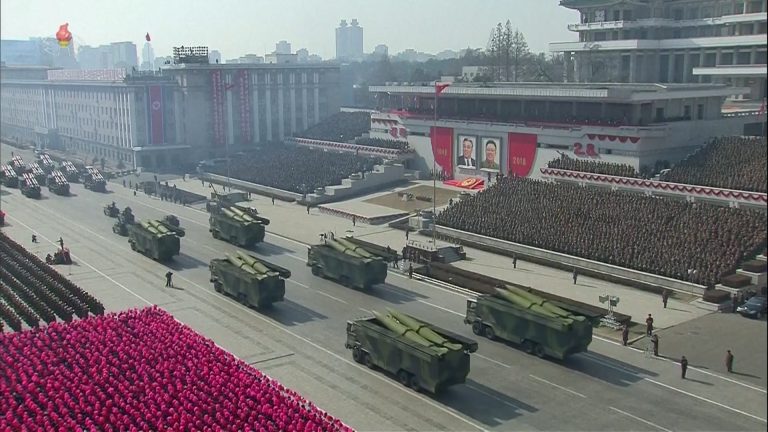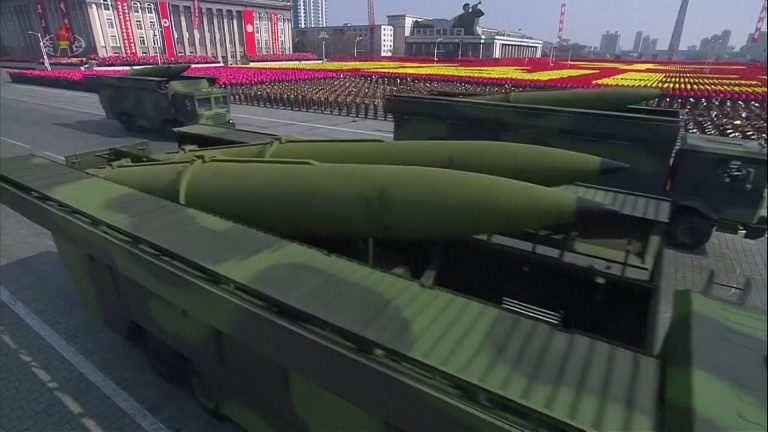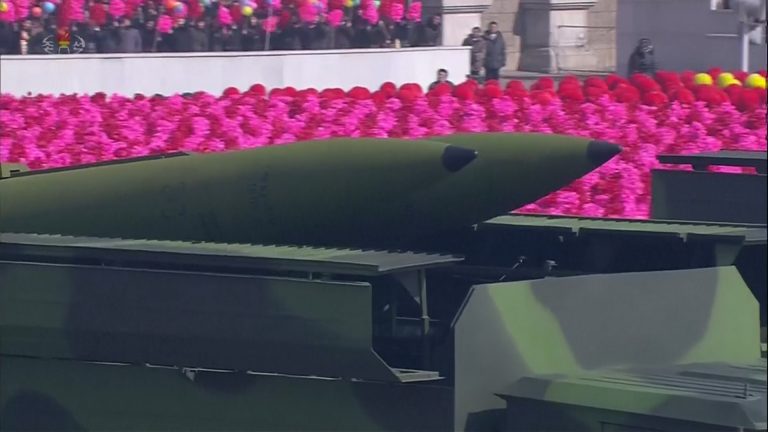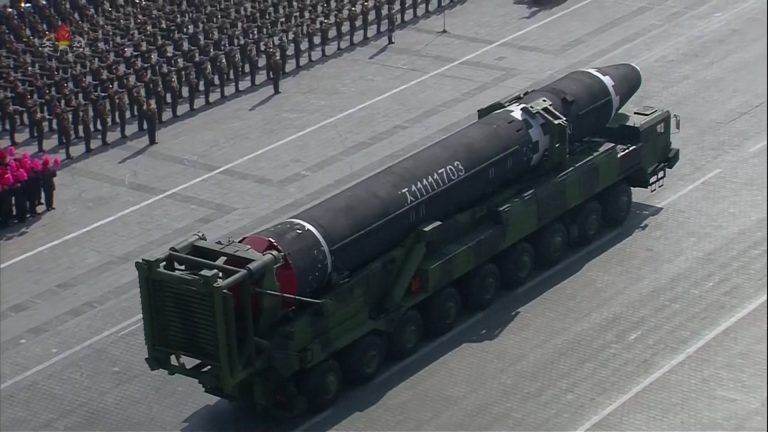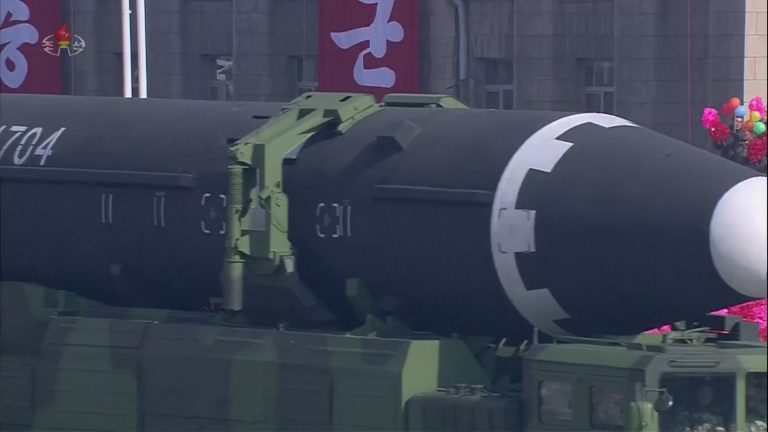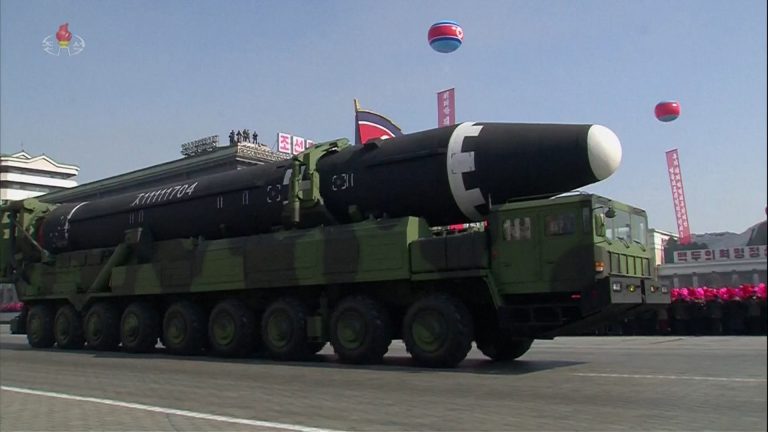North Korea’s Army Day Military Parade: One New Missile System Unveiled
North Korea’s much anticipated military parade on February 8, the 70th anniversary of the Korean People’s Army, was smaller in scale than previous parades, but offered some insights into the North’s growing WMD program. While no new long-range ballistic missiles were unveiled, there was one new solid-fuel, short-range ballistic missile (SRBM) on parade.
Figure 1. Overview of Army Day parade at Kim Il Sung Square.
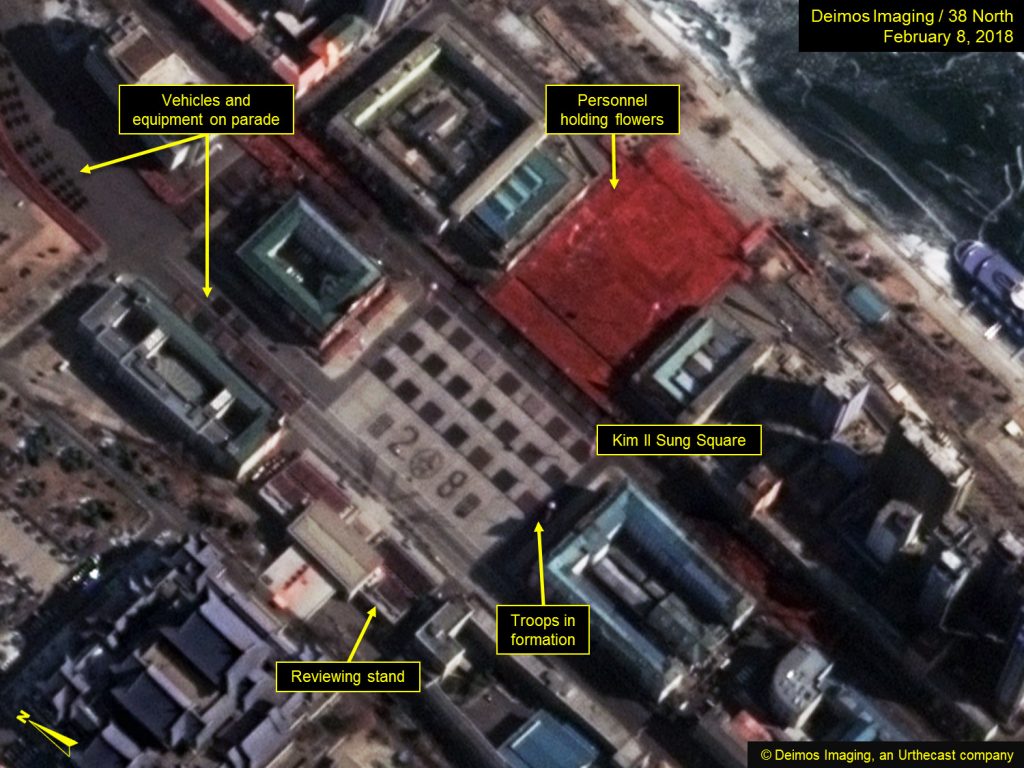
The size and external features of the new SRBM suggests that it is based on the Russian Iskander (9K720) ballistic missile, though it also shares many features found on South Korea’s Hyunmoo-2 ballistic missile. Additionally, this new missile does appear to be slightly larger than North Korea’s existing solid-fuel, short-range missile system—the Toksa (SS-21)—so would presumably have a longer range, making it roughly equivalent to the Iskander or Hyunmoo-2 systems. Without further details it is impossible to determine its performance characteristics or origins. It is notable, however, that the missiles seen in the parade have data-cable covers that run alongside the exterior surface and extend well into what is believed to be the warhead section, which makes little sense. The cables are used to transmit instructions from the guidance unit (located at the top of the motor, but below of the warhead section) to the steering mechanisms at the back end of the missile. The cables on an Iskander are much shorter, terminating where one would expect it to, at the guidance unit. The new missiles are carried in pairs atop four-axle trucks, which are unlike those that support the Russian Iskander.
Of the long-range ballistic missiles displayed, there were four Hwasong-15 intercontinental ballistic missiles (ICBMs) carried on their nine-axle transporter-erector-launchers (TELs). The two-stage, liquid-fuel Hwasong-15 has only been flight tested once, but is assessed to be capable of delivering a nuclear weapon to any target within the continental United States. Additional tests are needed to establish the Hwasong-15’s performance, reliability, and accuracy. North Korea has also yet to demonstrate that it can fashion a warhead that can survive the extreme heat and vibrations of re-entry into the atmosphere.
It is curious that only four Hwasong-15 TELs were on display. North Korea imported six WS-51200 vehicles from China, transforming each of them into a TEL. To carry the giant Hwasong-15, engineers had to add an extra axle, for a total of nine. Perhaps North Korea’s remaining two WS-51200 platforms have yet to be modified to carry this large missile. Regardless, it appears for now that North Korea has a shortage of TELs, a conclusion that is reinforced by the fact that the three Hwasong-14 missiles were conveyed on tractor-trailers, not TELs.
Also on display were six Hwasong-12 intermediate-range ballistic missiles (IRBMs), each carried on six-axle TELs, and six solid-fuel Pukguksong-2 medium-range ballistic missiles. The Hwasong-12 can reach targets as far as Guam and has been flight tested six times, the first three tests failed and the last two test launches overflew Japan before crashing into the Pacific Ocean. It may already be deployed to military units, though more development and validation testing are needed to quantify its reliability and accuracy, details that may be less important to the Kim regime. The Pukguksong-2 has been test fired just two times.
Interestingly, the parade did not include the TELs carrying large launch canisters that were unveiled last year, nor did it feature the KN-08, KN-14, Musudan, Nodong, or any of North Korea’s many Scud-variants. The absence of the Musudan, which failed seven of its first eight launch attempts, suggests that the design has been shelved for now. The missing KN-08 and KN-14, which are presumed to be powered by the same Isyaev 4D10 engine used by Musudan, is not entirely surprising given the technical challenges posed by this more sophisticated Russian engine.

